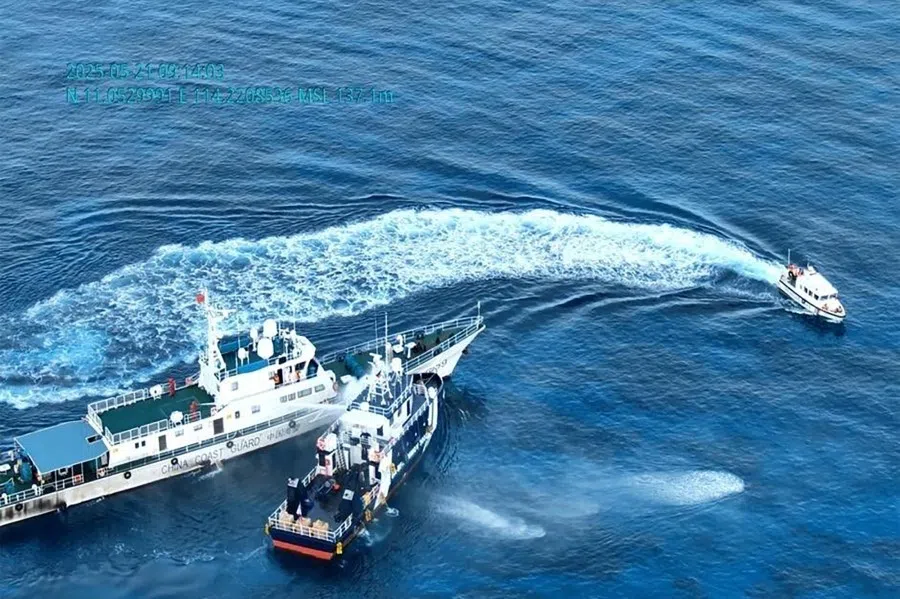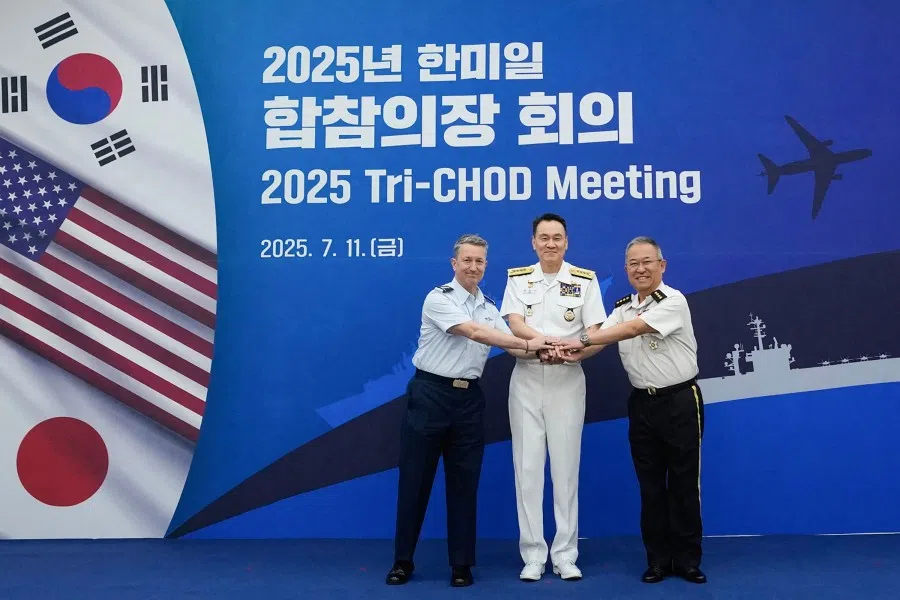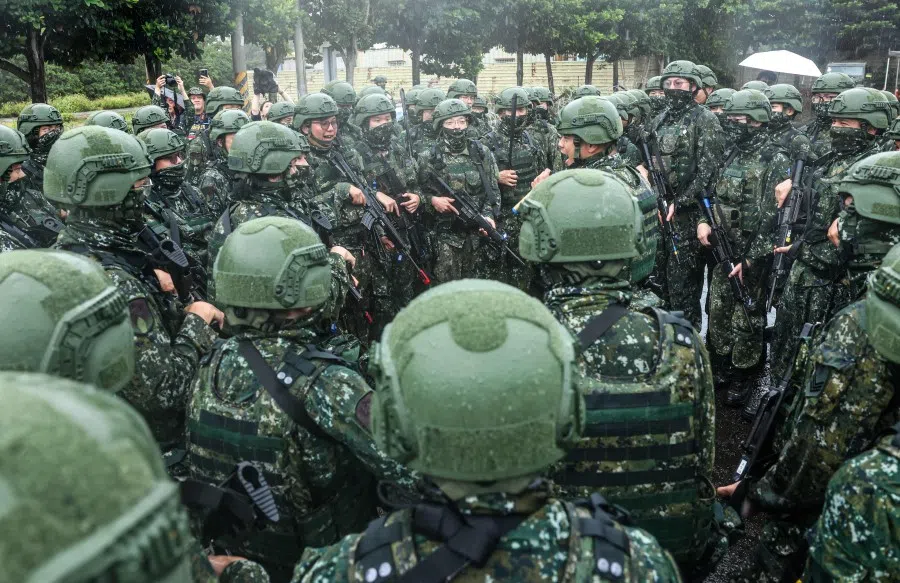One theatre to bind them all? Japan’s security vision faces old frictions
Commenting on Japan’s “one-theatre” concept, Manila-based analyst Don McLain Gill thinks that Japan alone will not be able to ensure the security of this strategic space; rather, this will depend on how actively involved the US, the Philippines, South Korea and Australia would be, given their geographical significance in both seas.

In April, Japanese newspaper Asahi reported that during Japanese Defence Minister Gen Nakatani’s meeting with US Defence Secretary Pete Hegseth, the former proposed a “one-theatre” concept for military operations, linking the South China Sea and the East China Sea into a single strategic sphere amid concerns over China’s continued push for sea control in the Western Pacific.
This follows Tokyo’s establishment of its first head of Joint Operations Command, which would be in charge of uniting the three branches of the Japanese Self-Defence Forces (JSDF) in times of peace and war. Leveraging the Joint Operations Command would be crucial in conducting diverse operations throughout the proposed single theatre.
However, Japan alone will not be able to ensure the security of this strategic space; rather, this will depend on how actively involved the US, the Philippines, South Korea and Australia would be, given their geographical significance in both seas.
South Koreans see the parallels with what China has done in the South China Sea — using civilian installations to serve as outposts for its military eventually.
Shared challenges in the Western Pacific
From a general standpoint, the challenges faced by these countries in the past two years alone should be enough reason to forge a more integrated and consistent response towards China’s assertiveness in the maritime space. In August 2024, a Chinese military reconnaissance plane entered Japan’s territorial airspace off the Danjo Islands for the first time. The following month, a Chinese aircraft carrier entered Japan’s contiguous waters for the first time, adding to the recent string of escalatory activities.
China has also been increasing its provocations against Australia. In October 2023, a People’s Liberation Army (PLA) Navy guided missile destroyer directed active sonar pulses at Australian Navy divers working underwater, causing them to sustain injuries. In February, a PLA Air Force J-16 fighter released flares dangerously close to a Royal Australian Air Force P-8A Poseidon on patrol in the South China Sea. In the same month, China’s naval task force conducted unannounced live fire drills between Australia and New Zealand. However, while these were conducted in international waters, China’s decision not to alert either country resulted in potential hazards against commercial flights in that area, reflecting Beijing’s desire to bully Canberra.

The Philippines has been one of the most targeted victims of China’s high-intensity grey zone operations within the Southeast Asian country’s exclusive economic zone (EEZ) in the South China Sea. The past two years saw a series of aggressive acts by the China Coast Guard and the maritime militia against Philippine operations in its EEZ. To its north, China has also become bolder in its escalating show of military force around Taiwan with military drills, which are beginning to look like rehearsals for a forced reunification.
More recently, South Korea has also faced significant challenges from China’s maritime forces. While Seoul often treats North Korea as its primary security threat, it is now realising that China is unlikely to hold back its ambitions of dominating the Yellow Sea at the expense of South Korea’s interests.
Early this year, China was seen to be putting up steel structures in the Provisional Measures Zone (PMZ) shared by both countries, without notifying Seoul. South Koreans see the parallels with what China has done in the South China Sea — using civilian installations to serve as outposts for its military eventually. Moreover, to illustrate power projection, China declared multiple temporary no-sail zones within the PMZ in May to conduct exercises of its most advanced aircraft carrier, Fujian.
The US and the Philippines have significantly expanded the scope of their military cooperation since 2023 to include both the South China Sea and the adjacent waters off northern Philippines facing Taiwan.
The benefits of a ‘one-theatre’ approach
Japan’s proposal has garnered mixed reviews from its partners in the Western Pacific. For the Philippines, a one-theatre approach to the South and East China Seas is practical and reasonable given the shared challenges its like-minded partners face in the interlinked maritime space. In the last two years, the Philippines has become a fulcrum for maritime security cooperation between the US, Japan, South Korea and Australia in the South China Sea.
The Philippines also has three visiting forces agreements with Washington, Canberra and Tokyo, creating more effective conditions for expedited troop deployments. While the US and the Philippines signed a military intel-sharing pact in November 2024 known as the General Security of Military Information Agreement (GSOMIA), Manila must also endeavour to pursue similar agreements with Tokyo and Canberra in order to narrow the intelligence and coordination gap towards China’s activities in their respective EEZs.

The US and the Philippines have significantly expanded the scope of their military cooperation since 2023 to include both the South China Sea and the adjacent waters off northern Philippines facing Taiwan. These exercises have demonstrated full battle-test simulations based on complex scenarios in the South China Sea and the northern regions of the Southeast Asian country, indicating a clear recognition of the highly intertwined nature of security between the Taiwan Strait and the South China Sea.
Japan and the US have also been exploring ways to strengthen their military-to-military relations in the East and South China Seas. In March, Hegseth announced that the US Forces Japan (USFJ) would be updated to a joint force headquarters to expand strategic operations and promote deterrence across the greater Indo-Pacific, particularly in the East China Sea, the South China Sea and the Korean peninsula. This would create a pathway for the US to better integrate its air, land, sea and cyber forces under one command headquarters in Japan.
Ambiguities and unaligned interests remain
However, there are also challenges in operationalising this integrative theatre. First, there is still much ambiguity surrounding the definitions and parameters of this operational space. This is where it would be crucial for like-minded partners to cement their parameters for a more seamless action plan under a joint center.
In this regard, the soon-to-be-launched coordinating centre in Manila for the Squad countries — the US, Japan, the Philippines, and Australia — will be a crucial step in facilitating a more formal discussion in incorporating a single-theatre approach within each country’s regional security strategy for better operational compatibility.
... the Philippines and Japan, besides the US, seem to be the only countries that have shown their understanding towards the threat a Chinese invasion of Taiwan can pose to their national survival.
Second, the single-theatre concept is a clear plan of action to deter and address China’s increasing challenges on the Western Pacific. No country in the region comes close to possessing the intent and the capability of disrupting the principles of international law like China. However, certain countries may have reservations regarding the extent of their ability to envision this approach.
For instance, while Taiwan’s security is an integral pillar in the stability of the Indo-Pacific, the Philippines and Japan, besides the US, seem to be the only countries that have shown their understanding towards the threat a Chinese invasion of Taiwan can pose to their national survival.
Accordingly, certain quarters in Australia believe that an invasion of Taiwan by China would only be confined to that geographic space. If this becomes the dominant perspective, it will impede Canberra’s ability to contribute more effectively to the security of the Western Pacific.

Similarly, South Korea may also have reservations about the one-theatre concept for various reasons. First, Seoul has traditionally not been so forthcoming in recognising the threat China poses to its national security interests. Instead, by operationalising this approach, South Korea may feel the attention of its allies and partners shifting considerably away from North Korea. Second, while South Korea’s security relations with Japan have revived under the former administration of Yoon Suk-yeol, there are concerns over their sustainability today under the Lee Jae-myung’s administration. Third, the Lee administration’s more equidistant vision vis-à-vis the US and China may eventually limit its participation in future integrative military operations to address the China challenge at sea.
While these countries share the same challenges from increasingly assertive China, some may find it difficult to commit to this level of integration, given various domestic and external constraints.
US commitment questioned
Third, and most critical, is the concern of US allies over Washington’s long-term security commitments to the Indo-Pacific, especially under a Donald Trump administration. While Hegseth emphasised that the Indo-Pacific region is the Trump administration’s “priority theatre” during the Shangri-La Dialogue on 30 May, the US has been sending mixed signals to its regional allies. These include the disorganised demands for Japan, South Korea and Australia to raise their defence spending to 5%.
Additionally, while Trump was supposed to be the leader to break the chain of US military involvement in the Middle East, the recent escalation between Iran and Israel shows that there is no clear exit strategy for Washington. As the situation remains volatile, there are added concerns over whether the US may continue to relocate its military assets slated for the Western Pacific to the Middle East.
Japan’s one-theatre approach proposal is significant and timely given the interconnected security dynamics between the East and South China Seas. This shows Tokyo’s resolve to pursue a larger security role in the Western Pacific. However, its success depends on the degree of cooperation it can leverage from its regional partners, particularly the US, the Philippines, Australia and South Korea.
While these countries share the same challenges from increasingly assertive China, some may find it difficult to commit to this level of integration, given various domestic and external constraints. Nevertheless, and at the very least, a robust partnership between the US, Japan and the Philippines holds the most promise in operationalising this one-theatre framework for integrated security efforts.





